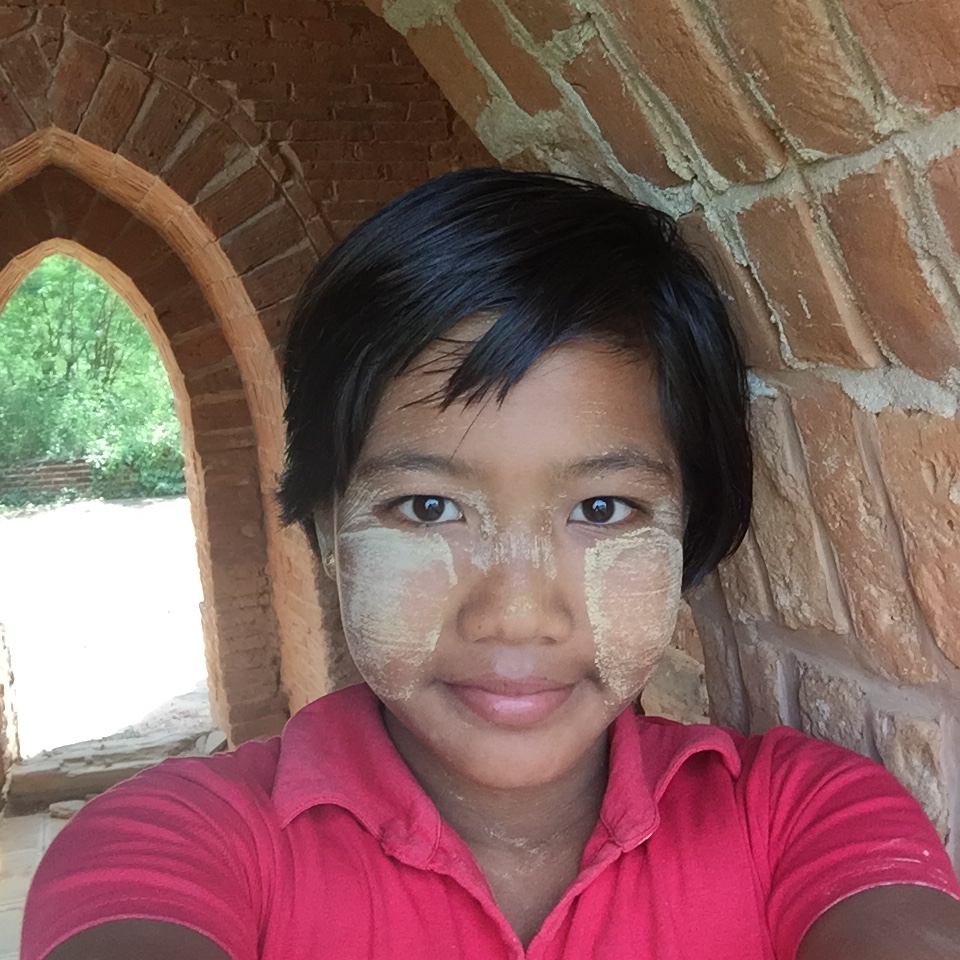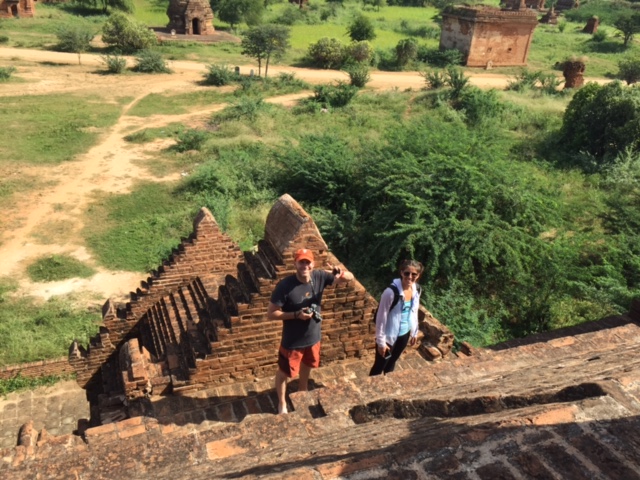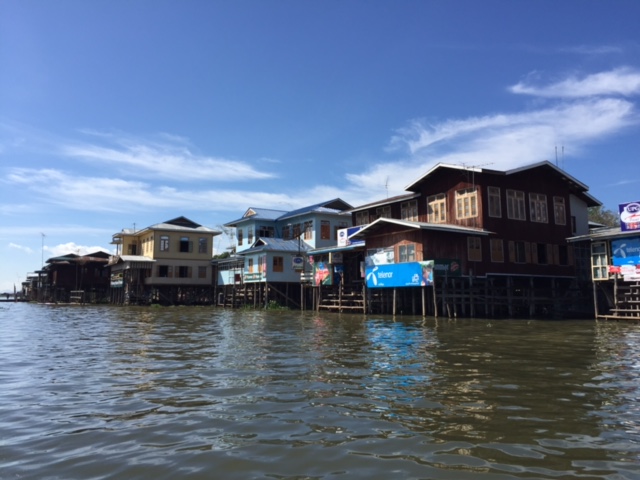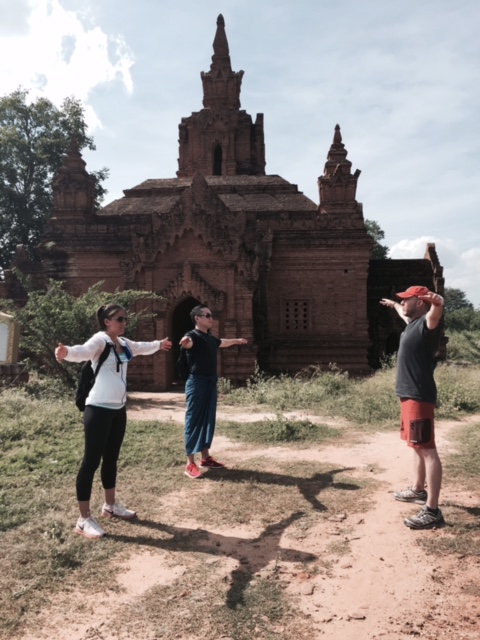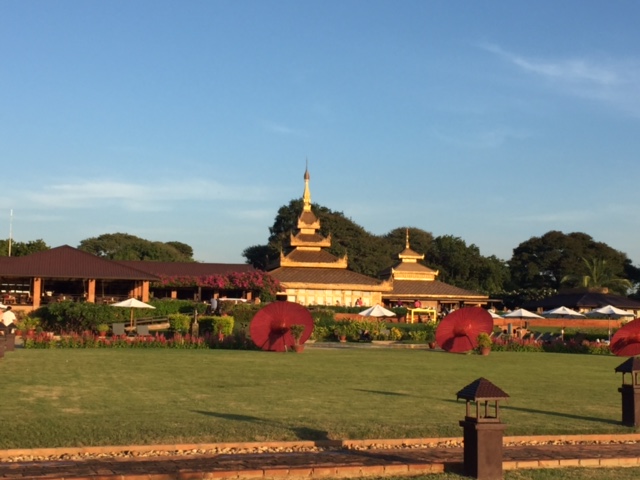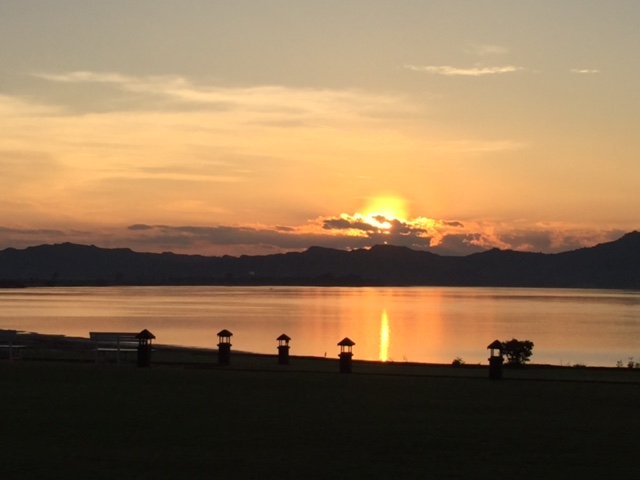Myanmar’s Magic
Most meaningful experience: Taking a long train ride - just once - gave me a chance to see the countryside of Myanmar and appreciate the bullet trains of Asia. Watching people live on Inle Lake was magestic. Developing a new relationship with Wayne and Amber was special.
Top tips:
• Explore the colonial streets of Yangon, visit the Shwedagon Pagoda and venture to the other side of the river.
• Watch the sunrise over Bagan from a hot air balloon, then get off-the-beaten-track on a bicycle ride through the archaeological site.
• Experience the spectacle of human creativity that is Inle Lake.
• Hike the 1,789 stairs to the top of the Mandalay Hill Pagoda for impressive views across the city.
• Learn more about Burma by reading “Letters from Burma” by Aung San Suu Kyi and “Burmese Days” by George Orwell.
Part 1:
I flew into Myanmar the day after Aung San Suu Kyi had won the first general election. There was a buzz of excitement in the air and people were optimistic about the future. As we touched down on a flight from Delhi, I was expecting more of the same developing world hardships as I stood waiting patiently in a long customs line. A new gate suddenly opened and I made my way to the front, with the customs agent proclaiming “winner!” with a big smile.
That’s when it first dawned on me that there was something special about the Burmese - an idea that would only strengthen during my stay. They strode peacefully when they walked, their faces smiled unintentionally and their eyes welcomed each other as if they were all enlightened Buddhists.
My trip began in the economic and spiritual center of Myanmar, Yangon, which served as the capital until 2006 when the military government relocated it to the purpose-built city of Naypyidaw. Less than two hours off the plane and I treated myself to a street food tour, accompanied by a Japanese friend, Hakuta-san, who was on assignment in Yangon. While he warned me “kiken kato” (“dangerous Kurt”) and grazed, I chowed down on everything before me, aware that I would probably pay the price later on. Burmese food has a slight Indian influence, with the typical Southeast Asian noodle soups enhanced with curry spices and crushed samosas.
The following day I explored the city with Yangon Walking Tours, with Twinkle my guide as we admired the old British architecture, wandered through Chinatown and visited the Strand Hotel where George Orwell penned many of his books. It was fascinating how many of the pagodas had adopted church-like features and vice versa, a sign that Burmese society has learned to accept and adapt to other religions. Myanmar’s interaction with foreigners dates back to the 1600s when international traders began visiting, with the country’s trading system the most trafficked in the world after Malacca in Malaysia.
After the walking tour and an ice cream, I decided to explore the “other” side of Yangon, taking a ferry across the river where I was immediately transported into a rural village. I hired a tricycle (an unexpected $10/hr!) to take me around, visiting a village that had been flattened by a typhoon a few years ago. For $40 you could donate a bag of rice, and despite the apparent hardships of these people, their smiles remained.
Upon returning to the city, I sped over to Shwedagon Pagoda, which is one of the most amazing sights in Southeast Asia. It symbolizes how deeply rooted religion is in Myanmar, with many believing that Buddhism- especially Vipassana – originated here.
That night, the street food caught up with me. The following morning I went to a local clinic, which a resembled a small pharmacy with just three benches inside. The doctor spoke English and made a few jokes about my introduction to Burmese street food before giving me some Cipro, Imodium and probiotics. It reminded me how thankful we should be in the West of the health system that’s at our disposal.
Before heading to the train station for my journey north, I stopped by the Aung San Market, which sells an endless array of jade, amber and rubies. They were clearly authentic as the prices were high and only negotiable by 20-30%. In addition to cheaper gems and jewelry, there were also artworks and clothing available, making this my favorite market in Southeast Asia by far.
When I first arrived in Yangon, I couldn’t quite figure out what it was that made the city so special. But after just a couple of days, it had left a warm impression on me. The Burmese have figured out how to love what they have and the people around them – even through all of the country’s difficulties. Even when I turned down a beggar, he made a joke, thanked me and walked away. Most Burmese want tourists to know about them, their culture and their lives, and I can only hope this doesn’t change as Myanmar opens its doors wider to the world.
Part 2:
As I left Yangon for the 18-hour train ride to Bagan (which was only 600 kilometers away), I couldn’t help but think how Burmese trains made Amtrak look like a Shinkansen bullet train. I’d just met up with my friends Amber and Wayne after a couple of days exploring Yangon and we settled into our overnight sleepers, which were comprised of two bunk beds that could be transformed into a seat during the day. It was bearable, largely thanks to my company - Ishii-san who drank beer almost the entire trip and a couple who had ventured through some of the world’s most restricted areas (Iran, Afghanistan and North Korea).
After negotiating the outskirts of Yangon, the train travelled through the countryside where I was surprised by the level of economic development. There appeared to be enough housing, transport and food to go around (compared to the overwhelming poverty I’d just seen in India). I particularly loved the fresh produce and snack stands that sprung up at each of the train stations. The countryside was lush and green, with the glimmer of pagodas rising up from behind trees and houses. I attempted to sleep but woke grappling the handlebars so I wouldn’t fall off the top bunk. It was definitely a bumpy ride.
With more than 10,000 monuments dotting its archaeological park, Bagan combines historical amazement with a bit of tame adventure. It’s fast becoming a tourism playground, with high-end hotels and sunrise hot air balloon tours, which are well worth the money.
But the highlight for me was renting bikes and getting off-the-beaten-track. We met a 12-year-old girl, Yiuwio, who started following us and at first, we were a bit skeptical. But her persuasion paid off and we embarked on a Tomb Raider-like experience with her through one of the pagodas. She captured selfies with us in a hundred ways, gloating that she was a pro iPhone photographer. After our ad hoc tour, she took us to eat in her local village and we couldn’t help but agree that the experience had been the best part of our trip.
After lunch, we chased down three big pagodas in the distance on our little Japanese basket bikes. The terrain was rough and in our pursuit, we ignored the warnings of a local man and peddled towards a river bed where I misjudged a turn and plunged over my handlebars. With no major injuries sustained, we continued on our mission (much of which was spent walking through a dry river gorge) before eventually making it back just in time for our Buddhist meditation session.
It was being held overlooking a beautiful river at the Nihon Sakura Hotel, with a monk guiding us through four different types of meditation: sitting, standing, lying and walking. He caught Amber singing while trying to meditate and discovered that her form of meditation is actually singing Disney songs!
From Bagan, we made our way to Nyaungshwe, a small city at the northern tip of Inle Lake. Fighting off hangry-ness, we wandered around the streets and eventually found a local cafe for afternoon tea. We were each served a standard set of pastry-like snacks and dim sum - they were the biggest snacks we had ever seen! We also noticed that they were re-used if not eaten.
Wayne took the lead and decided we should make use of our half day and take a road trip to a mountain-top monastery. Situated around 500 meters above sea level, it housed thousands of Buddha statues and was only being visited by a handful of other tourists. The two-hour trip offered a great view of the countryside, which appeared to be a mix of middle-class housing and an agricultural economy, with not as much poverty as one would expect.
The next day we joined a tourist boat ride around Inle Lake where I got the sense that everyone had to do the same itinerary. It was an amazing sight to see how a civilization had built a completely self-sufficient lifestyle on the lake. They had houses, farms, cloth weaving workshops, fisheries and irrigation - all of life’s necessities were harnessed from the lake.
During the trip we visited a Buddhist monastery, then stopped to shop for silver, lotus cloth and a variety of other locally made products. The highlight of the trip was definitely lunch where we had fish cooked several ways (unfortunately I didn’t get the recipe!) That evening we wandered around Nyaungshwe, which is home to a number of restaurants appealing to backpackers and a big night market. But surprisingly, the products being made on Inle Lake were nowhere to be found.
As we drove to the airport the next morning, I noticed how the fishermen on Inle Lake appeared to float on the mist - it was a truly magical sight. We were heading to Mandalay, our final stop on this Myanmar trip, which centers around the Mandalay Hill Pagoda. We hiked the 1,789 stairs that lead to the top of the pagoda for sweeping views across the city, which has evolved into a major commercial hub thanks to its large Chinese population. The following day we continued our workout with an eight-kilometer-long run around the Mandalay Palace, which satiated our appetites for historic sights.
Our trip to Myanmar was really enjoyable and it was interesting to see how the tourism economy is developing, with locals trying to persuade you to buy their products. I noticed that they were less aggressive than in other parts of Southeast Asia and responded more softly when you say “no”. But I think if you want to visit, the time is now, as much of the charm will likely disappear within the next decade or so.


